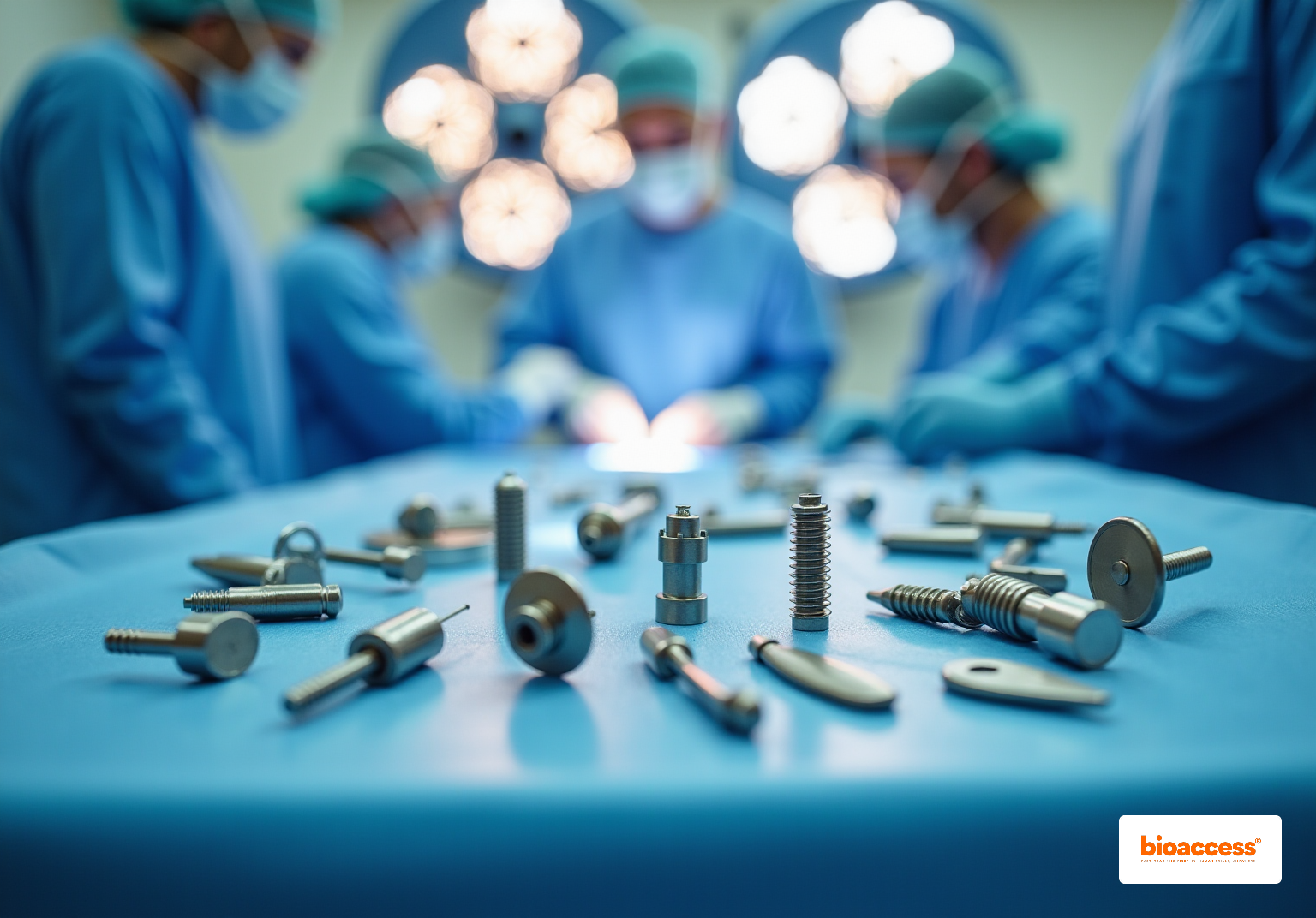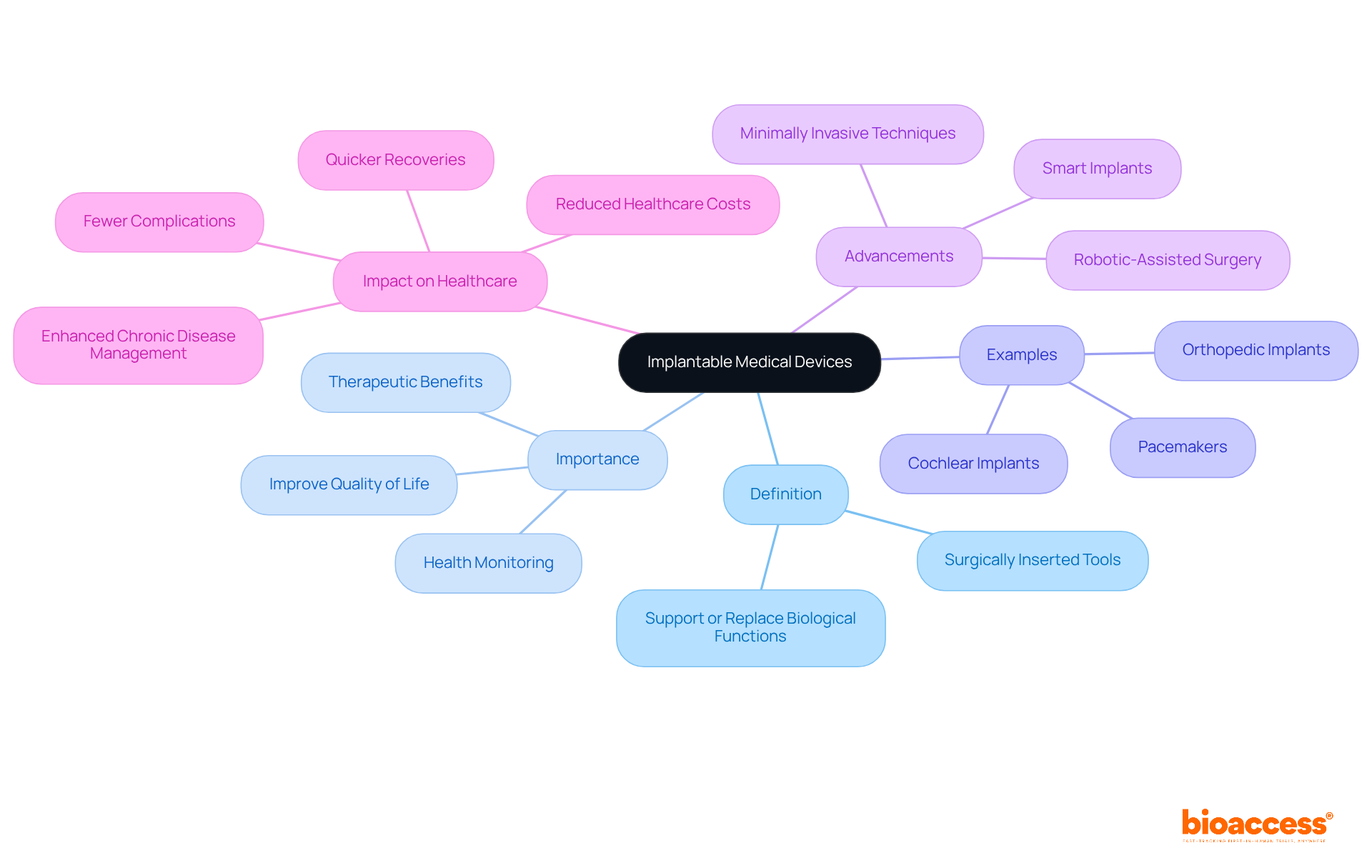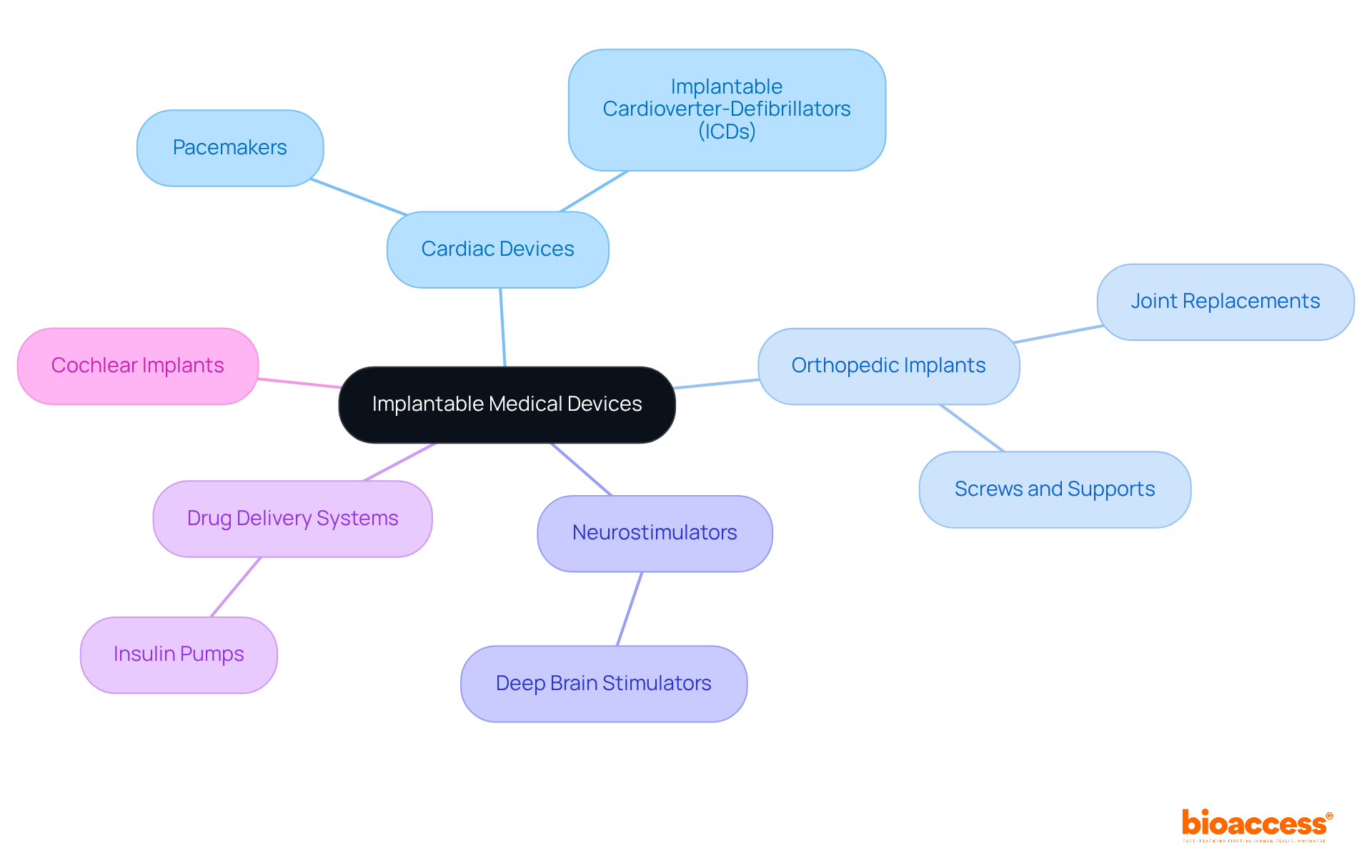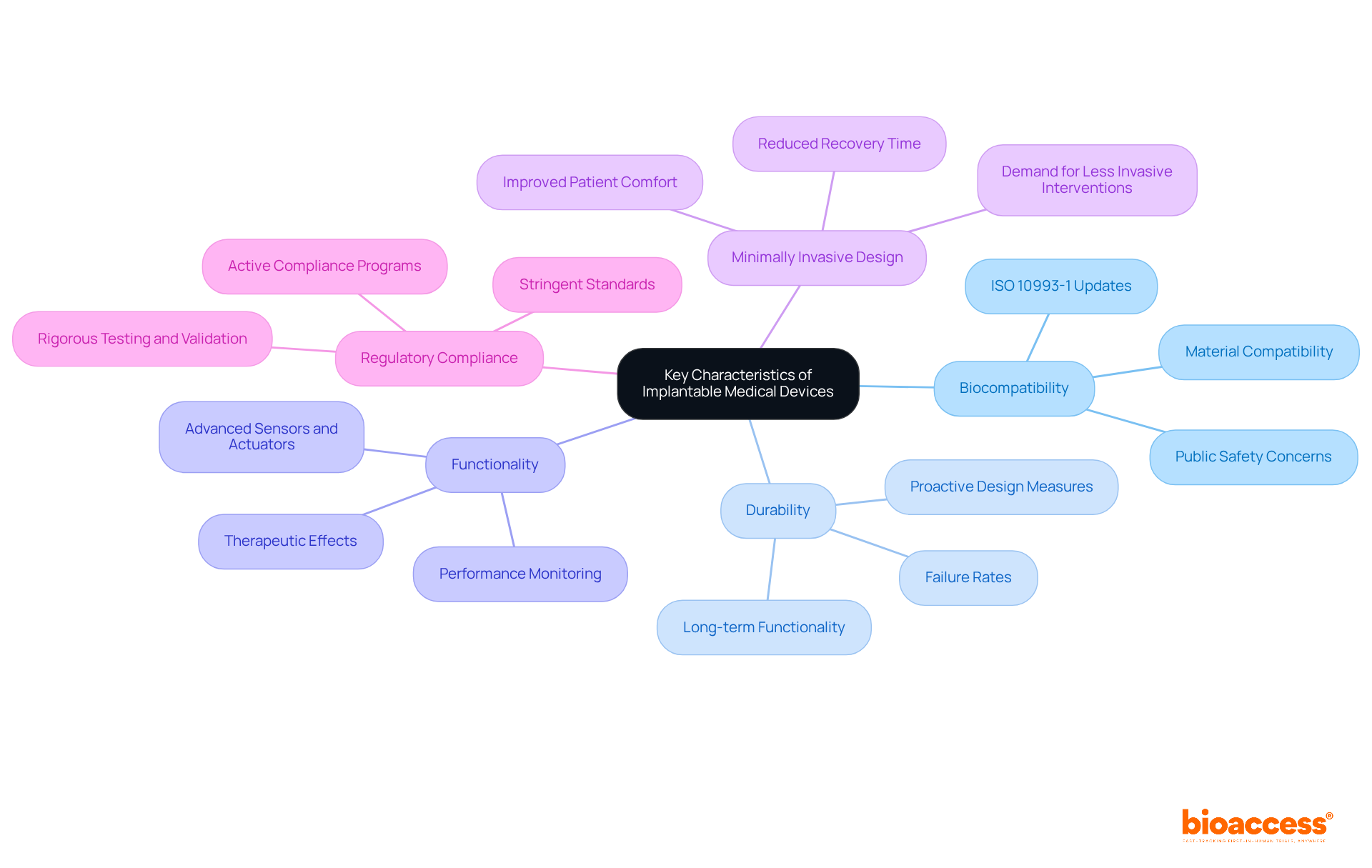


Implantable medical devices have fundamentally transformed healthcare, providing innovative solutions that enhance and restore essential bodily functions. As these devices continue to evolve, they not only promise to improve health outcomes but also aim to redefine the patient experience through advancements in technology and design. This evolution raises a critical question: how do these innovations effectively balance efficacy, safety, and ethical considerations in an ever-changing medical landscape?
The relevance of this inquiry cannot be overstated, especially in the context of clinical research. Understanding the interplay between technological advancements and patient safety is paramount for researchers and practitioners alike. As we delve deeper into the Medtech landscape, it becomes clear that addressing these challenges is essential for fostering trust and ensuring the successful integration of new devices into clinical practice.
Implant medical devices are advanced tools surgically inserted into the human body, either partially or entirely, to serve specific health functions. These devices, which can be permanent or temporary, are designed to support, enhance, or replace biological functions. Notable examples include pacemakers, cochlear implants, and orthopedic implants. Their significance is underscored by their ability to dramatically improve individuals' quality of life through therapeutic benefits, health monitoring, and faster recovery from various medical issues.
Recent advancements in implant medical devices have significantly enhanced their effectiveness and safety. Innovations such as minimally invasive surgical techniques and smart implants that wirelessly transmit health data not only reduce surgical risks but also lead to quicker recoveries compared to traditional methods. For instance, individuals with cardiovascular implants, like stents, experience fewer complications, which can prevent costly emergency interventions and lower overall healthcare expenses.
Statistics reveal that implantable instruments greatly improve outcomes for patients, with research indicating they can reduce indirect costs associated with lost productivity. Moreover, the integration of digital technologies in medical devices enhances chronic disease management, resulting in better health outcomes. As the healthcare equipment sector continues to evolve, the potential for future advancements in implant medical devices remains substantial, promising even greater improvements in care and quality of life.

The evolution of implant medical devices began in the late 1950s with the introduction of the first electronic pacemaker, marking a significant milestone in cardiac care. This innovation paved the way for subsequent advancements, including the development of implant medical devices such as implantable cardioverter-defibrillators (ICDs) in the 1980s, which have become crucial for managing life-threatening arrhythmias. Notably, the 1968 introduction of total artificial knee replacements addressed severe mobility issues, with over 800,000 procedures performed annually in the U.S. today, significantly enhancing patients' quality of life.
Throughout the decades, advancements in materials science and engineering have transformed the landscape of medical technology. The creation of the lithium iodine battery in 1972 revolutionized pacemaker technology, allowing instruments to last up to ten years and enabling multi-programmable features. As of 2019, approximately 183,100 cochlear implants have been implanted in the U.S., providing individuals with profound hearing loss a means to regain auditory function. According to the AMA, about 10% of Americans will have implant medical devices placed in their body during their lifetimes, highlighting the prevalence of these technologies.
The FDA's role in overseeing medical instruments, initiated with a pre-market review process in 1976, underscores the importance of safety and efficacy in the evolution of implant medical devices technology. Recent innovations in 2025 include smart implant medical devices that are capable of real-time health monitoring and therapy delivery, reflecting a growing integration of technology into healthcare. This historical progression also highlights the psychological and ethical challenges related to pacemaker interventions, emphasizing the necessity for a thorough understanding of the implications of these instruments.
As healthcare progresses, the emphasis on precision medicine and digital health technologies will further enhance the functionalities of implant medical devices, ensuring they address the varied requirements of individuals. The incorporation of telehealth alternatives for individuals with hearing impairment further demonstrates the progress in implant medical devices and highlights their significance in contemporary healthcare solutions.

Implant medical devices are categorized into various types according to their roles and uses, each playing a crucial part in healthcare and quality of life. Key categories include:
Cardiac Devices: These include pacemakers and implantable cardioverter-defibrillators (ICDs), essential for regulating heart rhythms and preventing sudden cardiac arrest. In 2014 alone, over 500,000 procedures involving these instruments were performed in the United States, highlighting their critical role in managing cardiac health.
Orthopedic Implants: This category includes joint replacements and screws that support skeletal structures, enhancing mobility and improving the quality of life for individuals with musculoskeletal issues. The orthopedic implants market reached USD 53.5 billion in 2023 and is projected to grow to USD 79.4 billion by 2032, driven by an aging population and increasing prevalence of orthopedic conditions.
Neurostimulators: Devices such as deep brain stimulators are designed to treat neurological disorders by delivering targeted electrical impulses to specific brain regions. These tools are gaining traction as effective therapies for conditions like Parkinson's disease and epilepsy.
Drug Delivery Systems: Examples include insulin pumps that provide continuous medication administration for chronic conditions like diabetes. These systems enable precise control of drug delivery, significantly improving management and adherence to treatment regimens.
Cochlear Implants: These instruments restore hearing in individuals with profound hearing loss by directly stimulating the auditory nerve, thereby enhancing communication and overall quality of life.
Each kind of implant medical device plays a crucial role in managing health issues, improving patient quality of life, and minimizing the need for more invasive procedures. As the market for these products continues to expand, advancements in technology and materials are anticipated to enhance their efficacy and safety. In Colombia, the supervision of these health instruments falls under INVIMA (Colombia National Food and Drug Surveillance Institute), which ensures adherence to health standards and regulations. As a Level 4 health authority acknowledged by the Pan American Health Organization/World Health Organization, INVIMA plays a crucial role in the safety, efficacy, and quality assurance of healthcare products. Furthermore, bioaccess® offers expert services that facilitate accelerated clinical trials for Medtech, Biopharma, and Radiopharma startups, contributing to local economic growth and healthcare improvements through job creation and international collaboration.

Key characteristics of implantable medical devices (IMDs) are crucial for their success in clinical applications:
Biocompatibility: IMDs must be made from materials that are compatible with human tissue to minimize adverse reactions. The increasing focus on biocompatibility addresses public safety concerns and regulatory expectations. Recent updates to ISO 10993-1 emphasize the importance of biological evaluation within a risk management framework for implant medical devices, ensuring that the materials used promote better integration with surrounding tissues.
Durability: These devices are designed to withstand the physiological environment of the body, ensuring long-term functionality. However, durability concerns remain a significant issue, with failure rates of certain units attributed to unforeseen physiological reactions. Proactive measures in design and material choice can mitigate these risks, enhancing longevity and patient safety.
Functionality: IMDs often incorporate advanced sensors and actuators that monitor and respond to physiological changes, thereby enhancing their therapeutic effects. This functionality is vital for implant medical devices such as pacemakers, which coordinate the heart's electrical activity and require ongoing performance monitoring for optimal results.
Minimally Invasive Design: Many IMDs are designed for minimally invasive implantation techniques, which reduce recovery time and complications. This design approach not only improves patient comfort but also aligns with the growing demand for less invasive medical interventions.
Regulatory Compliance: IMDs must adhere to stringent regulatory standards to ensure safety and efficacy. This involves rigorous testing and validation processes, with manufacturers encouraged to treat compliance as an active program rather than a static requirement. Such diligence helps avoid expensive recalls and ensures that products meet the necessary safety benchmarks.
These characteristics collectively ensure that implant medical devices not only fulfill the clinical needs of patients but also comply with safety and regulatory requirements, ultimately contributing to improved health outcomes.

Implantable medical devices stand at a remarkable intersection of technology and healthcare, fundamentally transforming the treatment and management of medical conditions. These devices, which include pacemakers and cochlear implants, play critical roles in enhancing patient care and improving quality of life. Their evolution, characterized by significant innovations and advancements, reflects a steadfast commitment to enhancing safety, efficacy, and functionality in medical technology.
This article has explored key insights into the definition, historical development, types, and characteristics of implantable medical devices. Notably, advancements in materials science and engineering have led to the creation of safer, more effective devices. The categorization of these instruments into cardiac, orthopedic, neurostimulator, drug delivery, and cochlear implants illustrates their diverse applications in healthcare. Moreover, the emphasis on biocompatibility, durability, and regulatory compliance highlights the necessity for rigorous standards in developing these life-changing devices.
The significance of implantable medical devices is profound; they not only address immediate health concerns but also pave the way for future innovations in patient care. As technology continues to evolve, the potential for smarter, more integrated devices becomes increasingly promising. Embracing these advancements is crucial for healthcare professionals, patients, and policymakers alike, as they collaborate to harness the full benefits of implantable medical devices. This collaboration is essential for improving health outcomes and enhancing the overall quality of life for individuals worldwide.
What are implantable medical devices?
Implantable medical devices are advanced tools that are surgically inserted into the human body, either partially or entirely, to perform specific health functions. They can be permanent or temporary and are designed to support, enhance, or replace biological functions.
Can you provide examples of implantable medical devices?
Notable examples of implantable medical devices include pacemakers, cochlear implants, and orthopedic implants.
Why are implantable medical devices important?
Implantable medical devices are important because they can dramatically improve individuals' quality of life through therapeutic benefits, health monitoring, and faster recovery from various medical issues.
What recent advancements have been made in implantable medical devices?
Recent advancements include minimally invasive surgical techniques and smart implants that wirelessly transmit health data, which enhance effectiveness and safety, reduce surgical risks, and lead to quicker recoveries compared to traditional methods.
How do cardiovascular implants impact patient outcomes?
Individuals with cardiovascular implants, like stents, experience fewer complications, which can prevent costly emergency interventions and lower overall healthcare expenses.
What statistics support the effectiveness of implantable medical devices?
Research indicates that implantable instruments can significantly improve patient outcomes and reduce indirect costs associated with lost productivity.
How do digital technologies enhance implantable medical devices?
The integration of digital technologies in medical devices enhances chronic disease management, resulting in better health outcomes for patients.
What is the future potential of implantable medical devices?
The healthcare equipment sector continues to evolve, and there is substantial potential for future advancements in implantable medical devices, promising even greater improvements in care and quality of life.